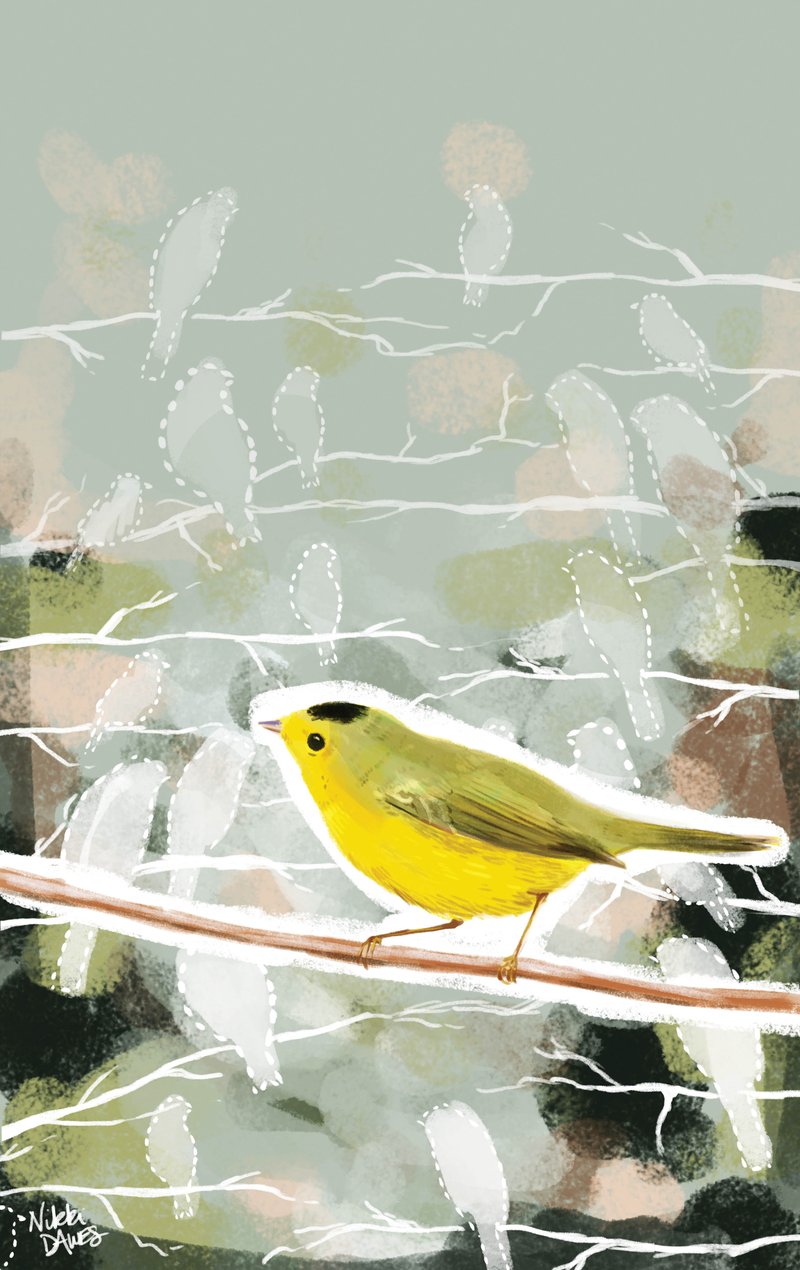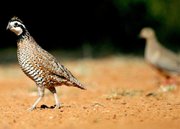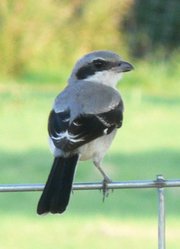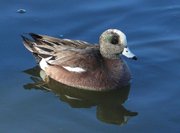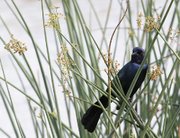Hear that lonesome whippoorwill,
He sounds too blue to fly ...
And as I wonder where you are
I'm so lonesome I could cry.
-- Hank Williams
A long time ago, an Arkansas boy lay awake long into summery nights while annoying whippoorwills whistled and called so loudly it was impossible to fall asleep.
Now in his 70s, he hardly ever hears a distant "whip-poor-will," even when camping in areas where the birds historically were abundant. He misses that noise.
The next most recognizable Arkansas bird song is probably that of the bobwhite, since it also whistles its name. That, too, has fallen silent in suburbs and on Arkansas farms.
Where have the birds gone?
One man's memories are not proof of change, for sure. But 100 years of evidence collected by citizen scientists and analyzed by National Audubon Society researchers suggests that hundreds of bird species are in decline all over the nation, including some of Arkansas'.
The state boasts more than 400 species of birds, says ornithologist Dan Scheiman, director of bird conservation for Audubon Arkansas. "Among that number, 152 are threatened by climate change," he says.
The North American Bird Conservation Initiative is a 23-member coalition of government agencies such as the Defense Department and the Farm Service Agency, private organizations including Audubon and U.S. bird initiatives like Ducks Unlimited. In 2014, its "State of the Birds" report identified 33 U.S. bird species whose range is in steep decline. Twenty-two of these species are commonly found in Arkansas.
According to long-term surveys, these species have lost more than half their global population over the past four decades.
In addition, the Audubon scientists, U.S. Fish and Wildlife Service and the Smithsonian Institution have collectively predicted that a number of the birds that seem abundant now are at risk of extinction. Scientists interpreting bird census numbers collected by citizens during a century of Christmas Bird Counts predict that a crisis looms for at least 314 North American bird species -- roughly half of the birds in the continental United States.
This crisis could take place as soon as 2050, they said. The cause is complex, and there are many contributing factors including motor vehicle/bird collisions, predation by domestic pets, and crashes into large reflective glass surfaces. But the dominant root cause appears to be climate change that has made bird habitats uninhabitable.
Some of these species may prove to be resilient and escape extinction, but leading ornithologists predict extinction for many -- if no corrective action is taken.
Data collected by Christmas Bird Counts within the Natural State has been combined with national records and analyzed by Audubon statisticians. The picture it shows, Scheiman says, is that "Arkansas' birds are having their ranges change and their numbers reduced by climate change."
NEW LANDSCAPES
It's not that all birds are disappearing. In some instances, Arkansas could see increased numbers as certain species are shifting their ranges from nearby states. For example, brown pelicans, distressed by habitat change in Louisiana, might move north into Arkansas, whereas now they are only occasional visitors here.
Temporary displacements have happened following hurricanes or seasonal droughts. But while birds can fly, trees cannot. A bird can fly away from habitat that is no longer habitable because of atmospheric conditions such as temperature and amount of rainfall, but trees and other plants vital to support that bird are stationary. If they are gone, the birds won't survive once they return home. That is why climate-caused changes in habitat are critical to avian well-being.
As prolonged drought persists in southwest Texas, some species appear to be moving northward into Oklahoma and then eastward into Arkansas.
Scheiman thinks the discovery of a crested caracara near Oil Trough in April is a case in point. Caracaras are large falcons that have never been documented in the wild in Arkansas before. (This particular ill or injured caracara is under the care of raptor rehabilitator Rodney Paul, who will release it if rehabilitation is successful.)
On the other hand, American tree sparrows, now occasionally seen in the northern tier of Arkansas counties, could move out of the state and into Missouri as winters get increasingly warmer.
FALLING
Seemingly numerous birds are declining, the census data reveal.
It is easier to invigorate a species that is abundant than to lift one from the endangered ranks. These common birds don't meet criteria to be listed as endangered or threatened, and yet their habitable range is being reduced.
Common Arkansas species in steepest range decline and their groupings are:
Ducks: Northern pintail, American wigeon and greater scaup
Game bird: Northern bobwhite
Wading bird: Purple gallinule
Water birds: Franklin's gull, black tern
Miscellaneous species: Yellow-billed cuckoo, short-eared owl, common nighthawk, pine siskin and chimney swift
Songbirds: Loggerhead shrike, bank swallow
Warblers: Blackpoll warbler and Wilson's warbler
Sparrow-like birds: Horned lark, field sparrow
Blackbirds: Eastern meadowlark, rusty blackbird, Brewer's blackbird, common grackle
WHO CARES?
Of the 22 bird species commonly found in Arkansas that the 2014 "State of the Birds" report lists as in decline, some are here only during migration. Some, like the Northern bobwhite, bank swallow, Eastern meadowlark and loggerhead shrike nest in Arkansas.
If these species continue to fail, it is likely that other species will flourish to fill their biological niche, but the diversity of the ecosystem will suffer as a result.
• Experts predict that as some of these species decline, pernicious insect populations will rise. That means even more blood suckers and tomato destroyers.
• Northern pintails, greater scaup and American wigeon are species that Arkansas' duck hunters are allowed to harvest. The decline of these waterfowl species would leave a hole in the sportsman's portion of our economy.
Such is what has happened, for example, in Arkansas with quail hunting -- now a rare activity except for pen-raised birds. Florida has declared that sportsmen can no longer legally take quail, even though the Northern bobwhite is the state bird.
Arkansas citizens voted in favor of an eighth-of-a-percent conservation sales tax that went into effect in 1997. That tax generates about $26 million each year, and a portion of that money is earmarked for protection of species of wild birds that are threatened. As a result, Arkansas has a financial and political infrastructure that could protect birds that most other states do not.
The Arkansas Game and Fish Commission, which administers these funds, was historically a hunting and fishing regulatory agency. With the passage of the conservation tax, its mission came to include protecting and promoting nongame species. The hummingbird-banding project at Casscoe is an example of the fund at work.
TOWARD A SOLUTION
As disheartening as the scientists' projections are for the survival of half of the bird species in North America, Audubon Society experts say some reasons for hope remain.
First is the matter of time. The catastrophic crash of bird populations is projected to occur between 2050 and 2080. That allows for roughly 35 years to combat climate change.
Second, the United States has a history of enacting legislation that saves birds. The first occasion occurred in the 1890s when the collection of bird feathers for decorating hats was so popular that egrets, herons and other wading birds were pushed to the brink of extinction. Ornithologists and ordinary bird watchers of that generation raised such a clamor that President Woodrow Wilson supported the passage of the Migratory Bird Treaty Act of 1918. The act outlaws the killing of certain bird species; it also initiated large-scale, scientifically based bird conservation efforts. The era saw the birth of the environmental movement, the formation of the Audubon Society, and the first National Wildlife Refuge to protect birds at Pelican Island in Florida.
As a result, the numbers of wading birds rebounded.
In the 1950s, the insecticide dichlorodiphenyltrichloroethane (DDT) was in broad use to control mosquitoes and agricultural pests. Birds that ate poisoned insects died or became infertile. Particularly vulnerable were bluebirds and the biggest birds at the top of the food chain -- kites, peregrine falcons and our national symbol, the bald eagle.
Audubon societies were among the first to raise the alarm when the bird census data began noting the decline and scientists discovered the cause to be DDT. Over protests of farmers and ranchers, the United States banned DDT in 1972. Less caustic ways of controlling insects emerged. Crop yields have increased. And in 2007, eagles were removed from the endangered species list.
A third reason for hope, according to the National Audubon Society, is the significant work that ordinary citizens can do to reduce their contributions to air and water pollution and to give direct assistance to birds. These things can be done now.
If they aren't done now, bird scientists warn, the day will come when an old man's memories are all that will remain of Arkansas' diverse and beautiful bird populations.
Did you ever see a robin weep,
When leaves begin to die
That means he's lost the will to live,
I'm so lonesome I could cry.
Jerry Butler is a freelance writer who writes frequently about Arkansas birds. Share your comments and stories with him at
jerrysharon.butler@gmail.com
ActiveStyle on 06/15/2015
